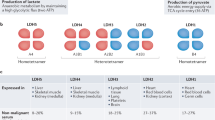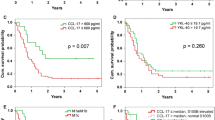Abstract
TGF-β1 and oxidative stress are involved in cancer progression, but in melanoma, their role is still controversial. Our aim was to correlate plasma TGF-β1 levels and systemic oxidative stress biomarkers in patients with melanoma, with or without disease metastasis, to understand their participation in melanoma progression. Thirty patients were recruited for melanoma surveillance, together with 30 healthy volunteers. Patients were divided into two groups: Non-metastasis, comprising patients with tumor removal and no metastatic episode for 3 years; and Metastasis, comprising patients with a metastatic episode. The plasmatic cytokines TGF-β1, IL-1 β, and TNF-α were analyzed by ELISA. For oxidative stress, the following assays were performed: malondialdehyde (MDA), advanced oxidation protein products (AOPP) levels, total radical-trapping antioxidant parameter (TRAP) and thiol in plasma, and lipid peroxidation, SOD and catalase activity and GSH in erythrocytes. Patients with a metastatic episode had less circulating TGF-β1 and increased TRAP, thiol, AOPP and lipid peroxidation levels. MDA was increased in both melanoma groups, while catalase, GSH, and IL-1β was decreased in Non-metastasis patients. Significant negative correlations were observed between TGF-β1 levels and systemic MDA, and TGF-β1 levels and systemic AOPP, while a positive correlation was observed between TGF-β1 levels and erythrocyte GSH. Lower levels of TGF-β1 were related to increased oxidative stress in Metastasis patients, reinforcing new evidence that in melanoma TGF-β1 acts as a tumor suppressor, inhibiting tumor relapse. These findings provide new knowledge concerning this cancer pathophysiology, extending the possibilities of investigating new therapies based on this evidence.



Similar content being viewed by others
References
Lebrun JJ. The dual role of TGF-beta in human cancer: from tumor suppression to cancer metastasis. ISRN Mol Biol. 2012. doi:10.5402/2012/381428.
Humbert L, Lebrun JJ. TGF-beta inhibits human cutaneous melanoma cell migration and invasion through regulation of the plasminogen activator system. Cell Signal. 2013. doi:10.1016/j.cellsig.2012.10.011.
Moustakas A. TGF-beta targets PAX3 to control melanocyte differentiation. Dev Cell. 2008. doi:10.1016/j.devcel.2008.11.009.
Schriek G, Oppitz M, Busch C, Just L, Drews U. Human SK-Mel 28 melanoma cells resume neural crest cell migration after transplantation into the chick embryo. Melanoma Res. 2005;15:225–34.
Perrot CY, Javelaud D, Mauviel A. Insights into the transforming growth factor-β signaling pathway in cutaneous melanoma. Ann Dermatol. 2013. doi:10.5021/ad.2013.25.2.135.
Lo RS, Witte ON. Transforming growth factor-beta activation promotes genetic context-dependent invasion of immortalized melanocytes. Cancer Res. 2008;68:4248–57.
Javelaud D, Alexaki VI, Mauviel A. Transforming growth factor-β in cutaneous melanoma. Pigment Cell Melanoma Res. 2008;21:123–32.
Krasagakis K, Garbe C, Schrier PI, Orfanos CE. Paracrine and autocrine regulation of human melanocyte and melanoma cell growth by transforming growth factor beta in vitro. Anticancer Res. 1994;14:2565–71.
Krasagakis K, Thölke D, Farthmann B, Eberle J, Mansmann U, Orfanos CE. Elevated plasma levels of transforming growth factor (TGF)-beta 1 and TGF-beta 2 in patients with disseminated malignant melanoma. Br J Cancer. 1998;77:1492–4.
Ramont SP, Hornebeck W, Maquart FX, Monboisse JC. Transforming growth factor-β1 inhibits tumor growth in a mouse melanoma model by down-regulating the plasminogen activation system. Exp Cell Res. 2003;291:1–10.
Malaponte G, Zacchia A, Bevelacqua Y, Marconi A, Perrotta R, Mazzarino MC, et al. Co-regulated expression of matrix metalloproteinase-2 and transforming growth factor-beta in melanoma development and progression. Oncol Rep. 2010;24:81–7.
Tas F, Karabulut S, Yasasever CT, Duranyildiz D. Serum transforming growth factor-beta 1 (TGF-β1) levels have diagnostic, predictive, and possible prognostic roles in patients with melanoma. Tumour Biol. 2014. doi:10.1007/s13277-014-1984-z.
Meyer M, Pahl HL, Baeuerle PA. Regulation of the transcription factors NF-κB and AP-1 by redox changes. Chem Biol Interact. 1994;91:91–100.
Meyskens Jr FL, McNulty SE, Buckmeier JA, Tohidian NB, Spillane TJ, Kahlon RS, et al. Aberrant redox regulation in human metastatic melanoma cells compared to normal melanocytes. Free Radic Biol Med. 2001;31:799–808.
Sander CS, Hamm F, Elsner P, Thiele JJ. Oxidative stress in malignant melanoma and non-melanoma skin cancer. Br J Dermatol. 2003;148:913–22.
Gadjeva V, Dimov A, Georgieva N. Influence of therapy on the antioxidant status in patients with melanoma. J Clin Pharm Ther. 2008. doi:10.1111/j.1365-2710.2008.00909.x.
Picardo M, Grammatico P, Roccella F, Roccella M, Grandinetti M, Del Porto G, et al. Imbalance in the antioxidant pool in melanoma cells and normal melanocytes from patients with melanoma. J Investig Dermatol. 1996;107:322–6.
Barcellos-Hoff MH, Dix TA. Redox-mediated activation of latent transforming growth factor-beta 1. Mol Endocrinol. 1996;10:1077–83.
Bauer G. Elimination of transformed cells by normal cells: a novel concept for the control of carcinogenesis. Histol Histopathol. 1996;11:237–55.
Häufel T, Dormann S, Hanusch J, Schwieger A, Bauer G. Three distinct roles for TGF-beta during intercellular induction of apoptosis: a review. Anticancer Res. 1999;19:105–11.
De Bleser PJ, Xu G, Rombouts K, Rogiers V, Geerts A. Glutathione levels discriminate between oxidative stress and transforming growth factor-beta signaling in activated rat hepatic stellate cells. J Biol Chem. 1999;274:33881–7.
Fitzpatrick TB. The validity and practicality of sun-reactive skin types I through VI. Arch Dermatol. 1988;124:869–71.
(INCA), I. N. D. C. Estimativas da incidência e mortalidade por câncer no Brasil. Rio de Janeiro: Ministério da Saúde; 2014.
Lawanga SK, Lemeshow S. Sample size determination in health studies. World Health Organization – Geneva, 1991. ISBN 92 4 154405.
Victorino VJ, Panis C, Campos FC, Cayres RC, Colado-Simão AN, Oliveira SR, et al. Decreased oxidant profile and increased antioxidant capacity in naturally postmenopausal women. Age (Dordr). 2013;35:1411–21. doi:10.1007/s11357-012-9431-9.
Descamps-Latscha B, Witko-Sarsat V, Nguyen-Khoa T, Nguyen AT, Gausson V, Mothu N, et al. Early prediction of IgA nephropathy progression: proteinuria and AOPP are strong prognostic markers. Kidney Int. 2004;66:1606–12.
Lowry OH, Rosenbrough NJ, Farr AL, Randall RJ. Protein measurement with the folin phenol reagent. J Biol Chem. 1951;193:265–72.
Miller G. Protein determination of large numbers of samples. Anal Chem. 1959;31:964.
Repetto M, Reides C, Gomez Carretero ML, Costa M, Griemberg G, Llesuy S. Oxidative stress in blood of HIV infected patients. Clin Chim Acta. 1996;255:107–17.
Hu ML. Measurement of protein thiol groups and GSH in plasma. In: Sies H, Abelson J, Simon M, editors. Methods in enzymoly 233. San Diego: Academic; 2004. p. 380–5.
Panis C, Herrera AC, Victorino VJ, Campos FC, Freitas LF, De Rossi T, et al. Oxidative stress and hematological profiles of advanced breast cancer patients subjected to paclitaxel or doxorubicin chemotherapy. Breast Cancer Res Treat. 2012;133:89–97.
Marklund S, Marklund G. Involvement of the superoxide anion radical in the autoxidation of pyrogallol and a convenient assay for superoxide dismutase. Eur J Biochem. 1974;47:469–74.
Aebi H. Catalase in vitro. In: Sies H, Kaplan N, Colowick N, editors. Methods in enzymoly 105. San Diego: Academic; 1984. p. 121–1266.
Tietze F. Enzymic method for quantitative determination of nanogram amounts of total and oxidized glutathione: applications to mammalian blood and other tissues. Anal Biochem. 1969;27:502–22.
Flaherty KT, Puzanov I, Kim KB, Ribas A, McArthur GA, Sosman J, et al. Inhibition of mutated, activated BRAF in metastatic melanoma. N Engl J Med. 2010;363:809–19.
Rizos H, Menzies AM, Pupo GM, Carlino MS, Fung C, Hyman J, et al. BRAF inhibitor resistance mechanisms in metastatic melanoma: spectrum and clinical impact. Clin Cancer Res. 2014;20:1965–77.
Kim CJ, Reintgen DS, Balch CM. The new melanoma staging system. Cancer Control. 2002;9:9–15.
Schmid P, Itin P, Rufli T. In situ analysis of transforming growth factor-beta s (TGF-beta 1, TGF-beta 2, TGF-beta 3), and TGF-beta type II receptor expression in malignant melanoma. Carcinogenesis. 1995;16:1499–503.
Van Belle P, Rodeck U, Nuamah I, Halpern AC, Elder DE. Melanoma-associated expression of transforming growth factor-beta isoforms. Am J Pathol. 1996;148:1887–94.
Hassona Y, Cirillo N, Lim KP, Herman A, Mellone M, Thomas GJ, et al. Progression of genotype-specific oral cancer leads to senescence of cancer-associated fibroblasts and is mediated by oxidative stress and TGF-β. Carcinogenesis. 2013;34(6):1286–95.
Bounaama A, Djerdjouri B, Laroche-Clary A, Le Morvan V, Robert J. Short curcumin treatment modulates oxidative stress, arginase activity, aberrant crypt foci, and TGF-β1 and HES-1 transcripts in 1,2-dimethylhydrazine-colon carcinogenesis in mice. Toxicology. 2012;302(2–3):308–17.
Munger JS, Huang X, Kawakatsu H, Griffiths MJ, Dalton SL, Wu J, et al. The integrin alpha v beta 6 binds and activates latent TGF beta 1: a mechanism for regulating pulmonary inflammation and fibrosis. Cell. 1999;96:319–28.
Shull MM, Ormsby I, Kier AB, Pawlowski S, Diebold RJ, Yin M, et al. Targeted disruption of the mouse transforming growth factor-beta 1 gene results in multifocal inflammatory disease. Nature. 1992;359:693–9.
Panis C, Herrera AC, Victorino VJ, Aranome AM, Cecchini R. Screening of circulating TGF-β levels and its clinicopathological significance in human breast cancer. Anticancer Res. 2013;33:737–42.
Cui Y, Robertson J, Maharaj S, Waldhauser L, Niu J, Wang J, et al. Oxidative stress contributes to the induction and persistence of TGF-β1 induced pulmonary fibrosis. Int J Biochem Cell Biol. 2011;43:1122–33.
Halliwel B, Gutteridge JMC. Free radicals in biology and medicine. 4th ed. Oxford: Oxford University Press; 2007.
Korkmaz GG, Altınoglu E, Civelek S, Sozer V, Erdenen F, Tabak O, et al. The association of oxidative stress markers with conventional risk factors in the metabolic syndrome. Metabolism. 2013;62:828–35.
Letterio JJ, Roberts AB. Regulation of immune responses by TGF-beta. Annu Rev Immunol. 1998;16:137–61.
Suzuki Y, Ohno S, Okuyama R, Aruga A, Yamamoto M, Miura S, et al. Determination of chronic inflammatory states in cancer patients using assay of reactive oxygen species production by neutrophils. Anticancer Res. 2012;32:565–70.
Azorin I, Bella MC, Iborra FJ, Fornas E, Renau-Piqueras J. Effect of tert-butyl hydroperoxide addition on spontaneous chemiluminescence in brain. Free Radic Biol Med. 1995;19:795–803.
Halliwell B. Oxidative stress and cancer: have we moved forward? Biochem J. 2007;401:1–11.
Bernardes SS, Souza-Neto FP, Ramalho LN, Derossi DR, Guarnier FA, Silva CF, et al. Systemic oxidative profile after tumor removal and the tumor microenvironment in melanoma patients. Cancer Lett. 2015. doi:10.1016/j.canlet.2015.03.007.
Acknowledgments
The authors are grateful to J.A. Vargas and P. S. R. D. Filho for their excellent technical assistance and E. C. B. Carmelo of the Department of Clinical Research of the Londrina Cancer Hospital for her important assistance in patient recruitment and interview. The authors would also like to thank physicians M. A. Buges and C. Z. Campos for allowing their patients to participate in the study. The authors also thank the Araucária Foundation for providing financial support.
Author information
Authors and Affiliations
Corresponding author
Ethics declarations
Conflicts of interest
None.
Rights and permissions
About this article
Cite this article
Santos Bernardes, S., de Souza-Neto, F.P., Pasqual Melo, G. et al. Correlation of TGF-β1 and oxidative stress in the blood of patients with melanoma: a clue to understanding melanoma progression?. Tumor Biol. 37, 10753–10761 (2016). https://doi.org/10.1007/s13277-016-4967-4
Received:
Accepted:
Published:
Issue Date:
DOI: https://doi.org/10.1007/s13277-016-4967-4




